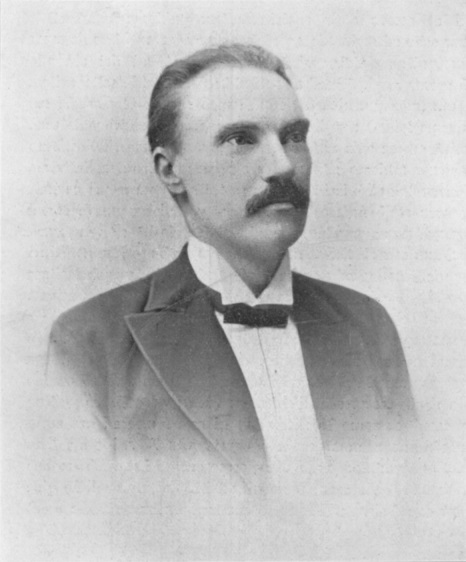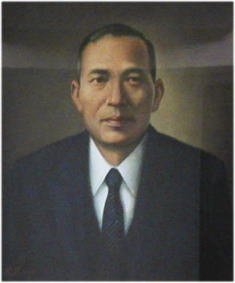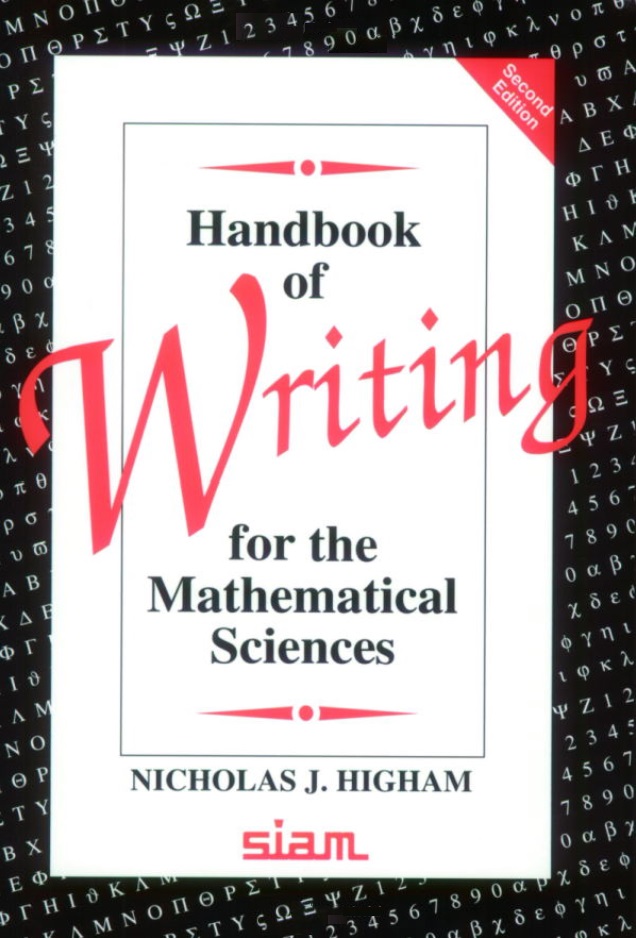Undergraduate Research - Fall 2021
The Eneström-Kakeya Theorem for Polynomials

Gustav Eneström (1852–1923) |

Sōichi Kakeya (1886–1947) |
COURSE: MATH 4010-004,
Call # 85322
TIME AND PLACE: TBA, Over Zoom
INSTRUCTOR: Dr. Robert Gardner
OFFICE HOURS: TBA
OFFICE: Room 308F of Gilbreath Hall
PHONE: 439-6979 (308F Gilbreath), Math Department Office 439-4349
E-MAIL:gardnerr@etsu.edu
WEBPAGE: http://faculty.etsu.edu/gardnerr/gardner.htm.
NOTE:
This syllabus is based on Fall 2015 Undergraduate Research syllabus of Dr. Michele Joyner.
OPTIONAL TEXT: N.J. Higham, Handbook of Writing for the Mathematical Sciences," Philadelphia: Society for Industrial and Applied Mathematics (1998).

PREREQUISITE: Completion of at least 35 credit hours in mathematics and by permit only.
COURSE DESCRIPTION: This oral (ICOM) and writing (IWRT) intensive course serves as the culmination of the mathematics curriculum. It is designed for students who are within three semesters of graduation. Students will work on projects under the supervision of faculty members of the Department of Mathematics and Statistics. Prior to enrollment each student must locate a potential supervisor to discuss tentative projects and required background.
COURSE OBJECTIVES: This course intends:
- To enable students in exploration of mathematics research topics of current activity;
- To hone students' technical writing and oral presentation skills;
- To guide the student through an inquiry-based investigation of an open problem (research).
This course has the following learning objectives for students:
- To be able to undertake and complete a research project;
- To write narrative and mathematical symbols fluently;
- To give an oral presentation of technical mathematics to a professional audience;
- To think of mathematics as an evolving and active discipline;
- To type mathematical papers using LaTeX.
- To give an effective oral presentation in class;
- To make an informed career choice.
COURSE EVALUATION: Each student is expected to produce a 20-page technical report and three oral presentations. The final grade is calculated as follows:
Technical Report 70 %
Oral Presentations 30%
Total 100%
WRITING INTENSIVE (IWRT) REQUIRMENTS:
The technical report must be typed in LaTeX with the following core sections:
- Introduction and Motivation
- Research Problem
- Results
- Discussion
- Bibliography
The minimum page length of this technical report is 20 pages. This format of the technical report should resemble articles published in leading mathematics and statistics journals.
Students must submit a plan and 4 drafts of the technical report before a final grade is given. First, a plan outline of the work should be developed in conjunction with the instructor. After that, a review of the literature should be used to create an introduction, a problem statement, and a bibliography for the report. Once approved by the instructor, partial or preliminary results should subsequently be developed and submitted to the instructor for revision. Before Thanksgiving, the student should submit a completed draft including final results. This will be marked by the instructor and returned the week after the Thanksgiving break, and then the student should revise into final form and submit by Friday of the final exam week.
The final draft must be at least 20 pages in length. Students are strongly encouraged to read chapter 6 of N.J. Higham's Handbook of Writing for the Mathematical Sciences as they prepare the final draft version of their technical report.
ORAL INTENSIVE (ICOM) REQUIREMENTS: Students will give at least three 10-minute oral presentations, which are required to be supported by slides in either Power Point or LaTeX (Beamer). (See Chapters 10, 11, 12 of Higham). At the end of the course each student will give an oral presentation conveying their research project with the following outline:
- Background
- Research Problem
- Mathematical Model
- Results
- Concluding Remarks
A copy of each oral presentation (pptx or pdf files) will be submitted to the instructor. The final presentation will be a group presentation. All students are required to stay the entire time for all presentations. The final presentation will be held on Thursday, December 3 starting at 5:30 p.m. and lasting until the last student has presented (location TBA). Food will be served.
| Due |
Written |
Oral |
| September 17 |
Plan/Outline/Description of Project |
- |
| October 4 |
Introduction and Literature Review |
Internal Presentation |
| November 1 |
Partial or Preliminary Results |
Internal Presentation |
| November 23 |
Draft of Full Report (to be revised) |
- |
| November 30 |
- |
Final Presentation |
| December 10 |
Final Revised Version |
- |
SYLLABUS ATTACHMENT: You can find an on-line version of the university's syllabus attachment (which contains general information concerning advisement, honor codes, dropping, etc.; last accessed 8/10/2021).
COVID-19 SAFETY POLICIES: You can find material on ETSU's COVID-19 polcies on the Modified Stage 4 Frequently Asked Questions (FAQs) webpage (last accessed 7/26/2021; document last updated 6/21/2021)).
This document includes the following questions/comments:
- 6(c). Faculty may not ask students if they are vaccinated.
- 6(d). Faculty may not require students to wear a face-covering.
- 11(b). Any member of the university community who has been fully vaccinated but wishes to continue wearing a facial is encouraged to do so. We ask that
you provide a supportive culture for those who continue this practice.
- 11(c). Individuals should not ask a person’s COVID-19 vaccination status...
- 18. Will students be required to get a COVID-19 Vaccine?
(a) Not at this time. However, students are strongly encouraged to get a vaccine.
- 48(b). If you have any symptoms of COVID-19, do not report to campus for work or class. You should immediately notify your supervisor and/or professor and follow guidelines for seeking medical care and self-quarantining.
COVID-19 TESTING: Any student, faculty or staff member experiencing COVID-19 symptoms may contact the University Health Center (located in Nick's Hall) to schedule a test: 423-439-4225 (Monday-Friday, 8 a.m.-4:30 p.m.) and 1-888-915-7299 (after hours). COVID-19 testing is also available at the ETSU Health COVID-19 Community Collection Site (325 N State of Franklin). Appointments are required and results are available to patients within 24 hours.
COVID-19 VACCINES: ETSU runs sporadic vaccine clinics. These clinics do not require an appointment. Details are on the COVID-19 Vaccine Clinics webpage.
You can get vaccines and MANY of the local pharmacies, including the Kroger Pharmacy at 1805 West State of Franklin Road (just west of campus). All vaccines are free. More information on the vaccine is at Vaccines.Gov; you can search this site for other local vaccination locations.
ETSU MASK POLICY: The lastest information of mask requirements is on the ETSU's mask policy website.
COVID-19 POLICIES FOR THIS CLASS:
A small document camera will be provided and meetings will occur through Zoom. This will allow for 2-way communication with writing and working together between the student and instructor.
Remember, students are "strongly encouraged to get a vaccine."
Vaccinations are the best way to avoid spreading COVID-19 and the best way to make the use of masks unneccesary.
IMPORTANT DATES:
(see the official ETSU calendar for more details; accessed 2/19/2021):
- Monday, August 23 = First day of classes.
- Sunday, August 29 = Last day to register or add without departmental permit.
- Wednesday, September 1 = Last day for graduate students to apply for spring 2022 graduation and to submit committee forms.
- Sunday, September 5 = Last day to drop without a grade of "W."
- Monday, September 6 = Labor Day (univeristy closed, no classes).
- Tuesday, September 7 = Begin late add with dean's permission.
- Monday and Tuesday, October 11 and 12 = Break Day (no classes).
- Monday, October 18 = Last day to drop without dean's permission.
- Thursday, November 11 = Veterans Day holiday (university closed, no classes).
- Wednesday, Thursday, and Friday, November 24, 25, and 26 = Thanksgiving holiday (univerity closed, no classes).
- Wednesday, December 1 = Last day to withdraw from the university.
- Friday, December 3 = Last day of classes.
THE RESEARCH PROJECT:
The goal of the research experience is to extend some of the results concerning the Eneström-Kakeya Theorem (on the location of zeros of a polynomial in the complex plane) to the setting of the noncommutative division ring of the quaternions.
Proofs will be presented of the classical Eneström-Kakeya Theorem and its extension to the quaternions. Then some refinements of the Eneström-Kakeya Theorem concerning monotonicity of parts of the coefficients will be considered and the desired new research will be extensions of this type of result pushed into the realm of the quaternions.
OTHER RESOURCES: The following may be of interest:
- To access the Mathematical Reviews: Go to the Sherrod Library online catalog. Click the "Title" tab and enter "Mathematical Reviews." Select "MathSciNet [Electronic Resource]" and follow the links. You will be asked to enter your user ID and password (the same you use for your ETSU e-mail). You are then redirected to MathSciNet and can freely use it and even download PDF versions of some of the papers you find! Of course, this protocol will work for any electronic journal available through the Sherrod Library.
- Geometry of Polynomials, Mathematical Monographs and Surveys #3, on GoogleBooks by Morris Marden, AMS, 1986. See Chapter II "The Critical Points of a Polynomial." For a study of the location of the zeros of a polynomial in terms of the coefficients, see Chapter VII.
- A Beamer presentation of some of the work I have done with past graduate students in complex analysis is:
Dr. Bob's Favorite Results on Complex Polynomials.
- R. Gardner and N. K. Govil, The Eneström-Kakeya Theorem and Some of Its Generalizations, in Current Topics in Pure and Computational Complex Analysis, ed. S. Joshi, M. Dorff, and I. Lahiri, New Delhi: Springer-Verlag (2014), 171-200. This is a survey paper on the Eneström-Kakeya Theorem in the complex setting and includes as an appendix a translation (from French) of Eneström's original 1920 paper.
- R. Gardner and N. K. Govil, On the Location of the Zeros of a Polynomial, Journal of Approximation Theory, 78 (1994) 286-292. The main result in this paper involves a general monotonicity condition on real and imaginary parts of the coefficients.
- N. Carney, R. Gardner, R. Keaton, and A. Powers, The Eneström-Kakeya Theorem for Polynomials of a Quaternionic Variable, Journal of Approximation Theory, Volume 250 (February 2020) as Article 105325. This is the first result concerning the Eneström-Kakeya Theorem in the quaternions. An extension of Theorem 9 involving more general monotonicity conditions is the goal of this class.
Return to Dr. Bob's webpage
Last updated: August 20, 2021.




